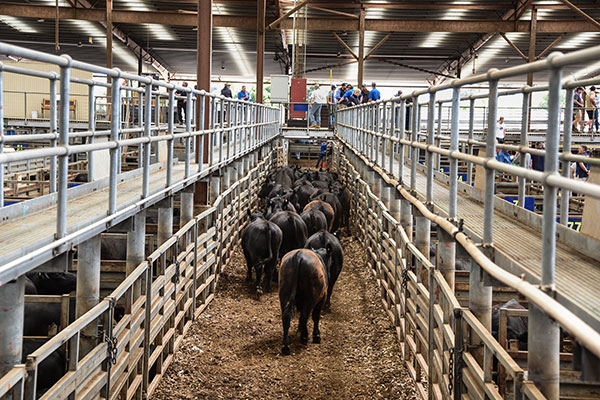History of the VLE
The seed that grew to become what is now VLE began with a conversation between one of the company’s founders, Mr Graham Osborne, and his former employer, Mr Allan Williams, over lunch one day in the 1970’s. Both men had become disgruntled with having to go through the regular process of treating cattle, which they had recently purchased from concrete floored saleyards, for foot injuries, along with others ailments and distress, caused as a result of having been in those concrete floored saleyards. Both agreed that should either man ever be in a position or have an opportunity to influence the design and operations of saleyards, they should do whatever was in their power to significantly improve the infrastructure and standards of the industry. Many years later, with the pending closure of the Dandenong Saleyards, such an opportunity arose.
Starting with nothing more than a pen and a blank sheet of A4 paper on the kitchen table, a small group of committed individuals came together to build, at their own expense and without government assistance, what would become the first privately owned, fully roofed, soft floored, multi agent, modern Livestock Exchange in Australia and the yard stick by which saleyards would be measured.
At the time, the design concept was considered radically ridiculous, extravagant and unnecessary. In the lead up to its opening and for some time after the founders of VLE, core to which were Mr Chris Sleigh, Mr Graham Osborne, Mrs Julie Khalid, Mr Bruce Baron, Mr Graeme Bennett and Mr Michael Quinert, received considerable flak and criticism. They were told that they had thrown their money away and would go broke, that they would damage the industry and leave it with a white elephant.
Despite the critics and the challenges, in just 3 years VLE went from being an idea on a page on the kitchen table to opening its first facility at Pakenham, Victoria, in 1999. As the years started to past, time proved the company’s founders were correct and the critics were wrong. The success of the Pakenham livestock exchange saw calls from within the industry for other saleyards to update and modernise, with the first step for some being to adopt the term ‘livestock exchange’ as part of their name in place of ‘saleyard’. Prior to the inception of VLE, livestock marketing centres in Australia were simply referred to as saleyards.
In 2006, on the back of the success of the facility at Pakenham, VLE opened its second livestock exchange at Leongatha, Victoria. Again, this was met with considerable opposition and critics, but again as the years past the critics became converts.
In the years that have passed since its tentative conception, VLE and its founders have indubitably left their mark on the Australian livestock marketing industry and improved it for the betterment of all. VLE has played a significant leading role in such industry matters as:
– Demonstrating that improving animal welfare can improve the bottom line for farmers,
meat buyers and the industry as whole.
– The introduction of post weigh selling in Victoria.
– The introduction of the National Livestock Identification System.
– Providing staff to Meat & Livestock Australia to assist in training when the system was rolled out national.
– Providing a trial ground for software companies to test applications that enabled the nation roll out.
– Providing design critique, design ideas and feedback to the manufacturers of livestock handling equipment to improve animal welfare standards.
– Creating and developing the concept of single animal weighing systems to improve marketability of livestock for farmers.
– Designing work systems that improved the standard of safety in saleyards for humans and animals.
– Working hand-in-hand with software developers to create saleyard software that enable multi-vendor selling, in doing so improving results for farmers and meat buyers.
Whilst making the above contributions, amongst others, to the industry, VLE’s reputation has grown international. VLE has regularly hosted delegations and representatives from South Korea, Japan, Thailand, Botswana and the European Union.
What began as a passing agreement between two farmers, over how to improve animal welfare standards in saleyards, has grown to be a strong and successful company, and while VLE is proud of its humble beginnings and its achievements, the company seeks to continually improve in order to provide better outcomes for farmers, animals, stock agents, livestock carriers, meat buyers and other stakeholders.




